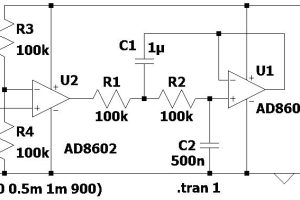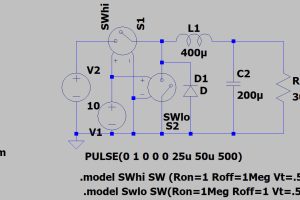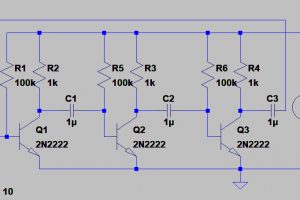I was concocting a rather silly low-pass filter design, when I remembered that Messrs Sallen and Key did it better in the 1950s, and decided to use their two-pole design to implement a Butterworth filter (thank you also Mr Butterworth). Wonderfully, there are free Sallen and Key Butterworth filter calculators on the web now – I used the one on ...
Tag Archives: LTspice
And when you document the undocumented?
Gloriously, ADI has a section in its LTspice help pages called ‘Undocumented shortcuts‘. But surely… As it happens, there are some good ones there, so take a look if you are an LTspice user. Hats of to whoever had the sense of humour. That reminded me of Innominate Tarn on Haystacks in the English Lake District – named the tarn-with-no-name. ...
LTspice ‘SW’ success at last (including anti-phase switching :)
Oh how long have I been trying to get the switches in LTspice working? Too long, is the answer (please be gentle, I do not have a Spice simulation background 🙂 LTspice has a way to model electromechanical switches, which I have occasionally tried to use to simulate dc-dc converters without all the hassle of setting up mosfets and appropriate ...
N-way multivibrators, and an increasingly confused ex-engineer
Pondering how the three-way multivibrator worked in the way home, I decided that the base waveforms must be overlapping triangle waves – which would give a good reason for the nice 120° output waveform, and a reason for it to be predictable. Sadly, my speculation was not confirmed – instead the bases look like this, with two of the transistors ...
LED flasher actually flashes
Maybe I shouldn’t be surprised, the led flasher modelled in LTspice works, just about as intended – nice crisp flashes at about the right rate. Seeing as everything is relying on Vbes and Vfs, the timings of the real thing are pretty similar to the model – the scope trace is close-enough to the simulated waveforms not to be worth ...
LED flasher 2: Hats off to Mr Kurt and LTspice
Mr Kurt, wise commenter of this parish, drew my attention to LTspice. What a revelation 🙂 LTspice is a free version of spice from Linear Technology, and it is delightfully easy to use, intuative, and seems to work rather well. Note, there is a flasher version 3 Current through component and voltages on nodes can be displayed with a single ...
 Electronics Weekly Electronics Design & Components Tech News
Electronics Weekly Electronics Design & Components Tech News




